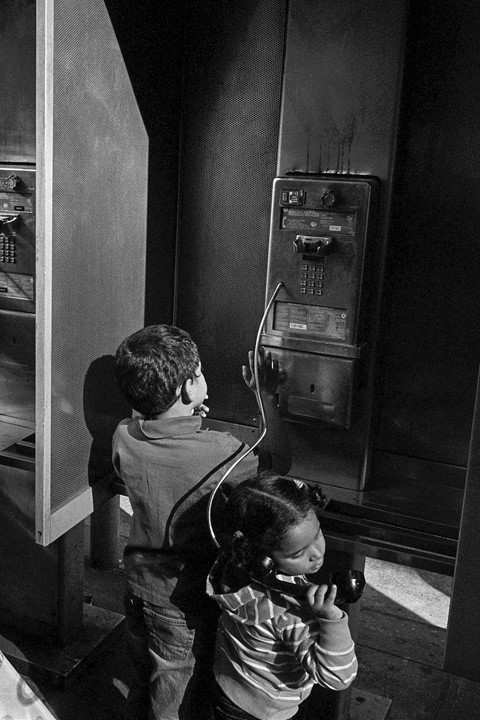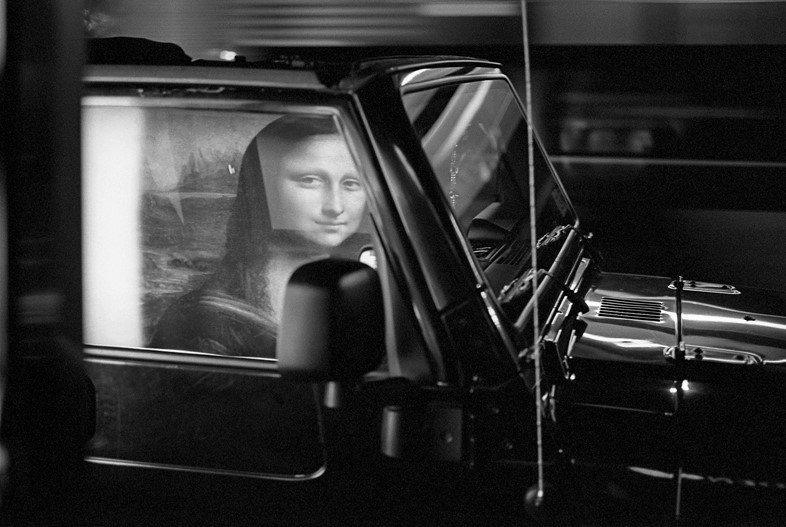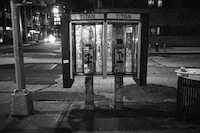Amassing an impressive archive that spans two decades of life in the 21st century, Daniel Weiss’s new book is a love letter to a disappearing world
Imagine your wife is sick, and no one will let you use their phone to call a doctor. When faced with this predicament back in 1881, William Gray decided no other American should ever suffer a similar fate and invented the public pay phone. By decade’s end, Gray rolled out coin-operated telephones nationwide, the sleek booth heralding the dazzling arrival of the 20th century. If all the world is a stage, the payphone was a port amid the storm, offering a place of refuge for a quick dispatch or lengthy repartee. At once intimate and theatrical, the pay phone was a fixture of public life, even as the once glamorous booth was slowly pared down into a humble kiosk.
But with the proliferation of mobile phones, some consider such basic, accessible, and affordable technology obsolete. In 2022, New York City staged a public event: the removal of the last working public pay phone from the ground outside 745 Seventh Avenue at 50th Street. Amid the pomp and spectacle, New Yorkers largely ignored the latest desecration of public services that defines Mayor Eric Adams’s regime. Lost in the promise of progress, most had moved on and thought little of practicalities. But there was one man on the Upper West Side who refused to let go. “From what I’ve heard from neighbours, there was a guy who was yelling at the City and complaining so heavily that he wanted to retain a phone that the city left two [non-working] phones outside his house on West End Avenue,” says photographer Daniel Weiss.
It’s a subject Weiss knows better than most, one that forms the heart and soul of his first monograph, Pay Phone (Smog Press). Printed in an edition of just 250, Pay Phone is a love letter to a disappearing world that locals fondly know as Old New York. Weiss, who lives in the same apartment he grew up in during the 1990s and 00s, began chronicling the city in 2006, amassing an impressive archive that spans two decades of life in the 21st century. But you might not know that from the pictures he makes. Looking to Walker Evans, Diane Arbus, and William Eggleston, Weiss takes meticulous care to craft each photograph so that it is a true portrait of the city he knows best.

Featuring just 37 photographs, Pay Phone is a precise slice of life that unfolds like scenes from an old Martin Scorsese film. “The pay phone is a symbol of connection that we all recognise, so it feels like a movie,” says Weiss. “I am very specific about what I include. You will see a Gristede’s ad on a truck, and I love that. It’s an old New York grocer that’s been around for hundreds of years and is still in business. Not everyone will pick up on it, but the people who will hopefully get a kick out of it. There’s a lot of stuff that I include to pay homage to certain things from my lifetime in New York.”
Here, there are no influencers or mobile phones, no indication of a world that has gone viral. Instead, Weiss sees the city’s transcendent essence: life on the streets. Here, the corner phone might be repurposed into a makeshift office or front porch. In one photograph, middle-aged men pop open the card table for a game of chess under a vision of Oprah Winfrey beaming out from a payphone ad. But those ads, as many New Yorkers know, can be valuable commodities in their own right, as Weiss reveals in a picture of a freshly vandalised phone kiosk. “Boost the Crime Wave”, one graffiti writer joyously extolls in another picture where the phone itself has been stolen. Throughout the book, graffiti abounds with the same childlike glee of the young kids piled happily into a kiosk for a call.

Pay Phone is an elegiac reminder that far too often, you don’t know what you’ve got until it’s gone. Weiss notes that the proliferation of mobile phones has transformed street photography, not just democratising the medium but reshaping the entire landscape of the street. People no longer stride with purpose so much as scroll with peripheral vision guiding their way. Faces are obscured, bodies hunched, gestures and emotions inhibited, postures redundant. “I can’t tell you how many cellular phones in the background have caused me to think, okay that photo is no good; what else do we got?” says Weiss “The photographs [in Pay Phone] represent something that no longer exists. Walker Evans and Eggleston were teaching me to see things that – once everywhere – were gone 30, 40 years later. The world is always changing and people have always been nostalgic for the lost world.”
Pay Phone by Daniel Weiss is published by Smog Press, and is out now.






